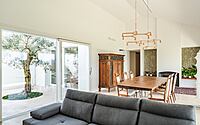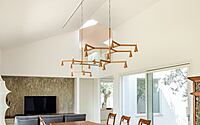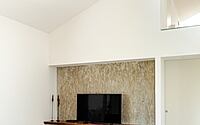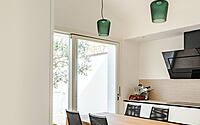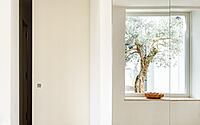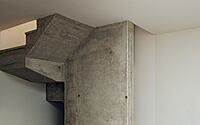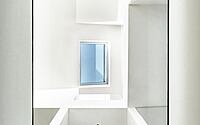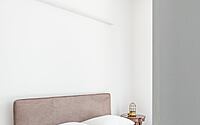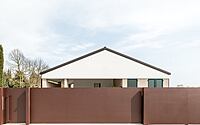House with Olive Tree by Studio Rossettini Architettura
House with Olive Tree is a minimalist house located in Mestre, Italy, designed in 2021 by Studio Rossettini Architettura.










Description
The property is located on a plot of 1500 square meters within an agricultural fund located in Chirignago in the municipality of Venice. It is a portion of a large cornfield immersed in the rural landscape typical of the territories surrounding the Venice lagoon.
The client, a collector of oriental carpets, immediately expressed a desire to live in a quiet place far from the rhythms of the city.
The project has as its founding objectives the enhancement of the rural landscape and integration with the existing building context, respecting the agricultural typology. It integrates with the proportions of the landscape by developing on a single floor to maintain visual contact with nature. The choice was made to arrange the house with a west-east longitudinal orientation, like the other rural buildings historically established in the surrounding territorial context.
The volume is almost entirely on one floor above ground, except for a storage room on the northwest side and a small basement room used as a cellar. The volume of the building has a double ‘gabled’ pitch as per agricultural typology, with a punctual extrusion of the pitch at the upper floor room.
The volume is ‘hollowed out’ at a porch on the west side, a porch on the south side, the canopy protecting the entrance to the house on the northwest side, and a patio on the north side.
The porch on the west side is open on the long side and overlooks the driveway and pedestrian entrances, and is functional for use in the warm months as it enjoys a large area of shade.
The porch on the south side, also open on the long side, overlooks the striking view of the cornfield that changes with the season.
The interiors are understated and clean to frame the furnishings that embellish and shape the identity of the spaces. The floors in the living area are travertine slabs with grouted joints and continue outside on the porch and patio. The rooms are in oak planks, like the loft but laid in French herringbone. A warm-toned slate slab floor was chosen in the basement, which blends well with the exposed concrete staircase septum.
The internal distribution of the house is linear: on the north side are arranged the service rooms and on the south side the habitable rooms. As a result, the north side has a discrete elevation with minimal openings and a very low height, in accordance with the exposure in the direction of cold winds.
Entrance to the house is via a covered driveway to the front door. Upon entering, one finds oneself in a modestly sized foyer open to the large living room, which is the heart of the house both from the point of view of distribution, as it divides the living area to the west from the sleeping area to the east, and from the point of view of space as it is the room of greatest height.
The living room is the heart of the house. It faces both the porch to the south and the patio to the north through sliding French doors, generating two types of green outdoor spaces: one to the south open to nature without barriers, the other more intimate and domestic, featuring a patio with its olive tree in the center. The living area features two fair-faced concrete walls characterized by the texture of osb panels used for casting formwork. On one of these walls rests the fireplace, embellished with an antique cast-iron counter hearth from the early 1800s. The other accommodates the TV area with a veined wood shelf with an LED backlighting the concrete wall from below.
In the center of the living room is a large table, composed of a single wooden top resting on two sheets of crystal.
The corridor to the west distributes a study room and a laundry room to the south; a bathroom and a storage room to the north. A service staircase connects the cellar in the basement and an attic room on the upper floor that partly overlooks the living room. This space, conceived as the client’s “refuge,” enjoys generous lighting provided by the three large skylights set flush with the perimeter walls.
The ground-floor corridor ends with a French door that opens onto a second porch used for car shelter from which the heating plant can be accessed.
On the east side of the house are arranged the sleeping quarters. On the south side there are two rooms overlooking the porch. On the head of the house to the east is arranged another room with a window overlooking the courtyard to the east; on the north side are two bathrooms.
Photography by Andrea Ceriani
Visit Studio Rossettini Architettura
- by Matt Watts